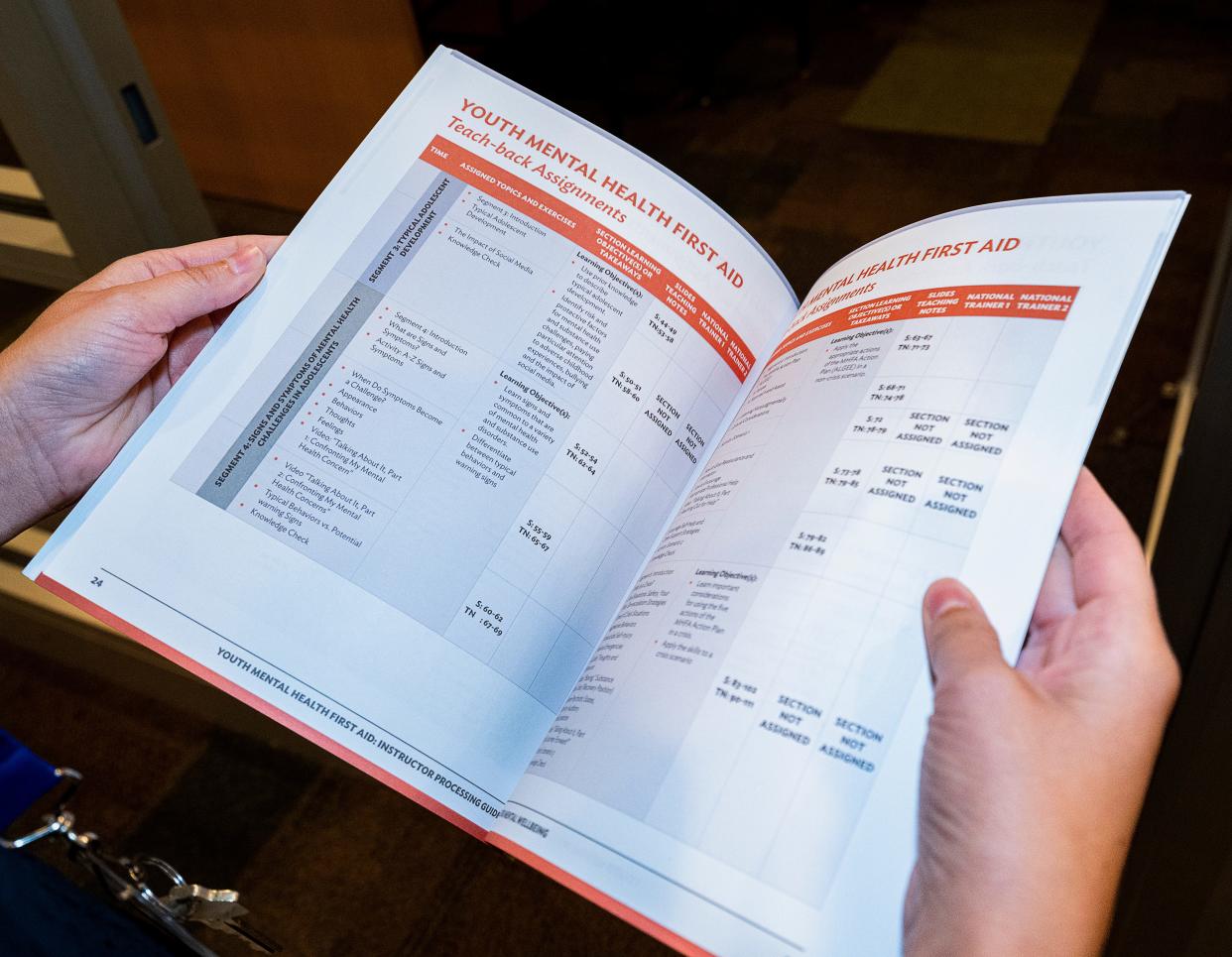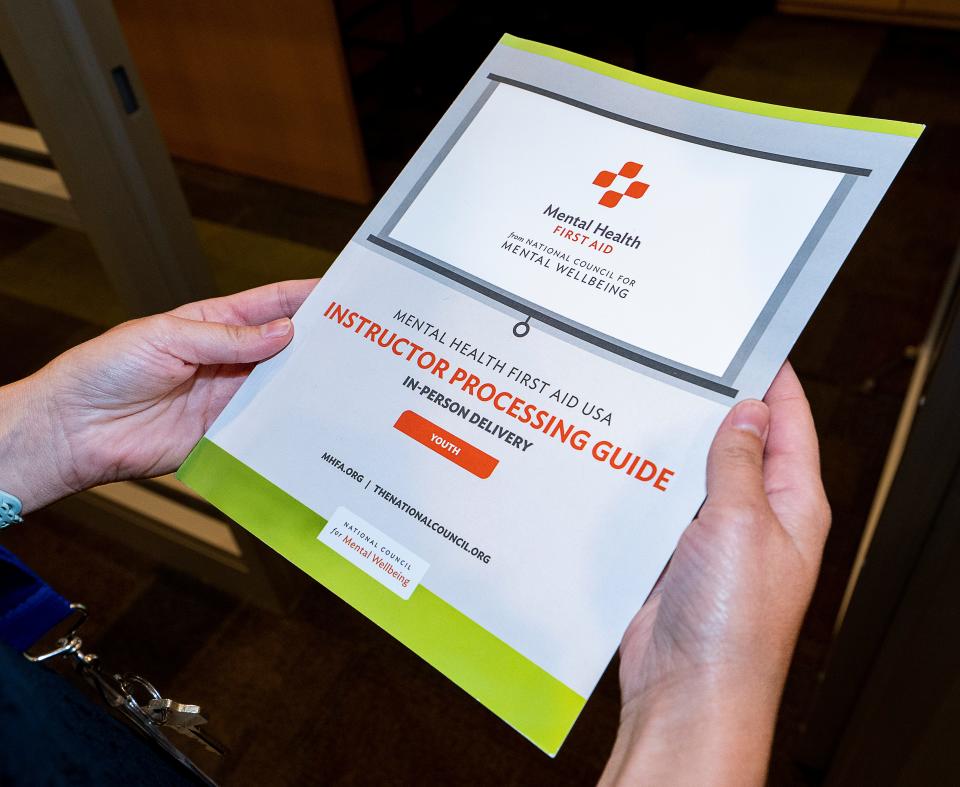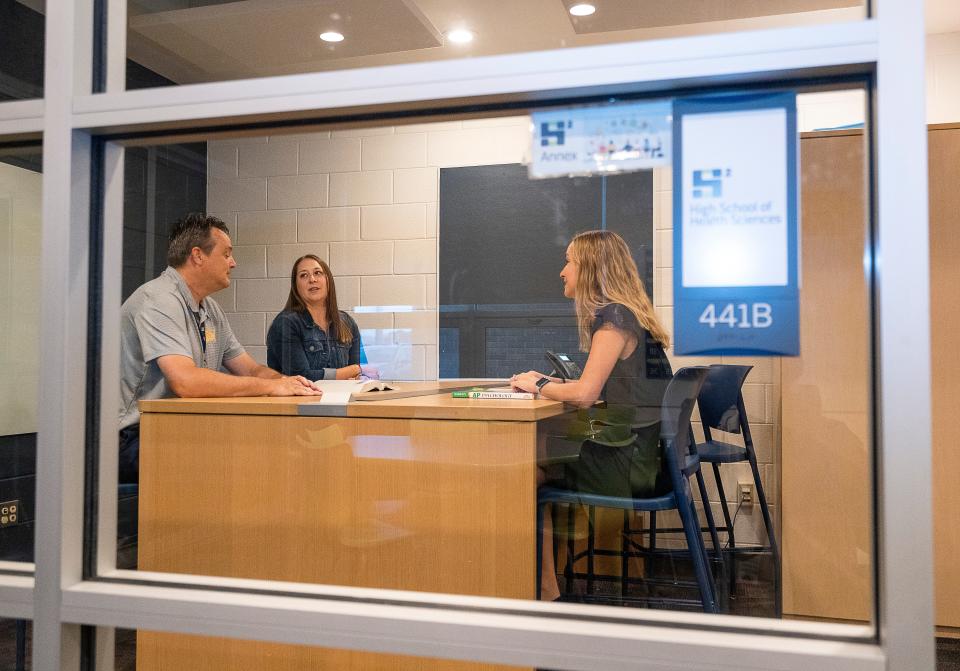More schools are training their staff in mental health first aid. Here's how it works.

Whether you're a math teacher, a bus driver, a janitor or an office manager, schools across Wisconsin are increasingly training their staff on youth mental health first aid, a program often compared to CPR.
Youth mental health first aid is designed to give adults the skills to responsibly identify and respond to adolescents in crisis. And it's ideal for school staff, said Libby Strunz, a school mental health consultant for the Wisconsin Department of Public Instruction.
"What's great about it is that it helps folks to support students in a role-appropriate way," Strunz said. "It's helping them to recognize that a student might be struggling."
Becoming trained in youth mental health first aid doesn't take the place of a therapist or counselor, and no mental health background is required. Youth mental health first aid training gives adults the information they need to recognize the signs and symptoms of mental health conditions and illnesses in young people ages 12 to 18. Additionally, it helps adults pick up on behaviors associated with substance use disorders, trauma and bullying. Then, adults can connect youth to student services or mental health professionals.

It's been recognized as a critical program statewide for how it addresses the youth mental health crisis. Young people are struggling with historically high rates of anxiety, depression and suicidal ideation, especially girls, LGBTQ+ youths, and youths of color at both national and state levels. .
Without addressing mental health, public school leaders across the state believe the academic gap that developed during the pandemic, when students were learning remotely, will continue to widen.
What is the state doing?
In the last year, DPI has partnered with Wisconsin Safe and Healthy Schools (WISH) to conduct 42 youth mental health first aid training sessions to a little more than 700 participants across the state, according to Strunz.
Additionally, they're also training youth mental health first aid trainers so they can better cover ground.
But WISH isn't the only state agency performing trainings. The University of Wisconsin Extension office, and regional and county offices are also prioritizing the training program.
More schools are also starting to implement a teen mental health first aid training program, Strunz said, with the goal of giving teenagers the tools they need to help a peer through a mental health challenge, including how to connect them with a supportive adult. That's especially vital because young people are more likely to report mental health struggles and suicidal thinking to a peer than to an adult.
What does it look like in practice?
The Kettle Moraine School District in Waukesha County took on training its staff on youth mental health first aid when it became clear that students were struggling more than usual with anxiety, depression and suicidal ideation, said Rebecca Ladsten, director of Kettle Moraine High School of Health Sciences and a math teacher.
Ladsten and district staff started the plan for implementing the program last year, and training started this summer. It felt particularly imperative considering the other issue: Staff had zero to very little training on how to respond to young people showing signs of mental illness.

Mental health also looks very different in adults and young people, said Allison Beyerl, school psychologist and director of learning, counseling and mental health at the Kettle Moraine School District. Mental health struggles tend to crop up as a behavioral problem for younger students.
Before the training, Ladsten described a pattern when confronting a student with mental health challenges: Staff often couldn't tell whether behavior was "normal" or required intervention.
"I think a lot of it is just starting conversations. Then, going into the training, it really lays out ‘Here’s the warning signs for different things you might see with students and what to do in those scenarios,’” Ladsten said.
How long does training take?
Kettle Moraine School District Mental Health Navigator Scott Bakkum said it took one 6½-hour training session, but training was done in batches of 20 to 30 staff members at time.
The training entails discussions, practicing methods, role-playing and "lots of learning," said Ladsten.
Does it work?
Like most training programs, mental health first aid is just one step in addressing the youth mental health crisis. It allows all staff members to more comfortably respond to a young person in crisis and, in doing so, helps to reduce stigma associated with mental illness and increase mental health literacy, Strunz said.
"It's a really great springboard, but we know that if we just do a one-and-done training, that doesn't really do a lot to shift school culture or create sustainable change," Strunz said.
Journal Sentinel reporter Alec Johnson contributed to this report.
Natalie Eilbert covers mental health issues for USA TODAY NETWORK-Wisconsin. She welcomes story tips and feedback. You can reach her at neilbert@gannett.com or view her Twitter profile at @natalie_eilbert. If you or someone you know is dealing with suicidal thoughts, call the National Suicide Prevention Lifeline at 988 or text "Hopeline" to the National Crisis Text Line at 741-741.
This article originally appeared on Milwaukee Journal Sentinel: Mental health first aid trains school staff to respond to youth crisis

